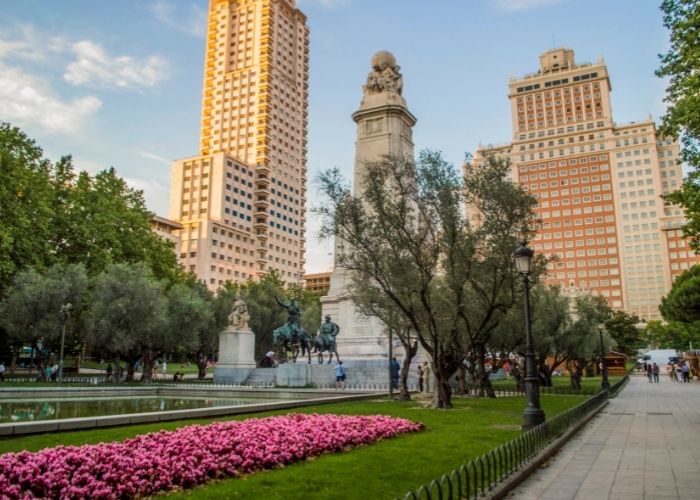MADRID – For two years, the Plaza de España in central Madrid was closed to the public to give the square a complete makeover. With significantly more greenery and less traffic, the brand new square is an environmentally friendly asset to the capital of Spain.
In 2017, residents of Madrid could vote for one of the international designs for the new Plaza de España. With more than 52% of the votes, the project ‘Welcome Mother Nature, Good Bye Mr. Ford’ emerged as the winner. This would transform the square into a green oasis of tranquility.
Epicentre of Important Parks and Monuments
Last Monday the time had come and the Plaza de España was reopened to the public. The renovation has certainly not been just an aesthetic one. The main square is now connected to no fewer than eight important historical and tourist sites of the city. These are the
- Egyptian Temple of Debod
- City parks Casa de Campo and Madrid Río
- Moorish garden Campo del Moro
- Plaza de Oriente, the Royal Palace
- Gardens of Sabatini
- Gran Vía
The entire project cost about €70 million and has created around 2,500 jobs, according to the Madrid City Council.
Archaeological finds
Work was delayed when the tunnel in Calle Bailén was to be connected to Plaza de España. During the excavations, walls of royal stables from the 16th century were found. A gallery of arches and remains of the cellars of the 18th-century Palacio Godoy was also found. With these archaeological finds, the original budget had to be increased by almost €9 million.
Madrid Mayor José Luis Martínez-Almeida said pedestrians can now walk from the Royal Palace to the Temple of Debod and from Puerta del Sol to Casa del Campo without encountering a traffic light. Before the makeover of the Plaza de España, pedestrians on these routes were still surrounded by heavy car traffic.
Redesign mobility and accessibility
Architect of the project Fernando Porras-Isla tells the newspaper El País that the main priority was to reduce this car traffic around the square. He, therefore, calls his design ‘a radical redesign of mobility and accessibility’. Thresholds and other obstacles have been removed, allowing pedestrians to move on one level between the eight emblematic places in the city mentioned.
Another important element is the landscaping on Plaza España, to which the title of the project ‘Mother Nature’ refers. With over 1000 new trees, the square now resembles a green octopus from above and the once-bustling roundabout has turned into the epicentre of the surrounding city parks.
A children’s playground has been created between the greenery, there is a park for the elderly and there is a route to view the archaeological finds that have come to light during the work. In the middle of the square, there will be another catering facility called Café Cervantes. This 250 square metre pavilion can accommodate 60 guests. Special are the facades, which are completely covered with greenery so that the whole will soon not look like a coffee shop, but a green hill.


